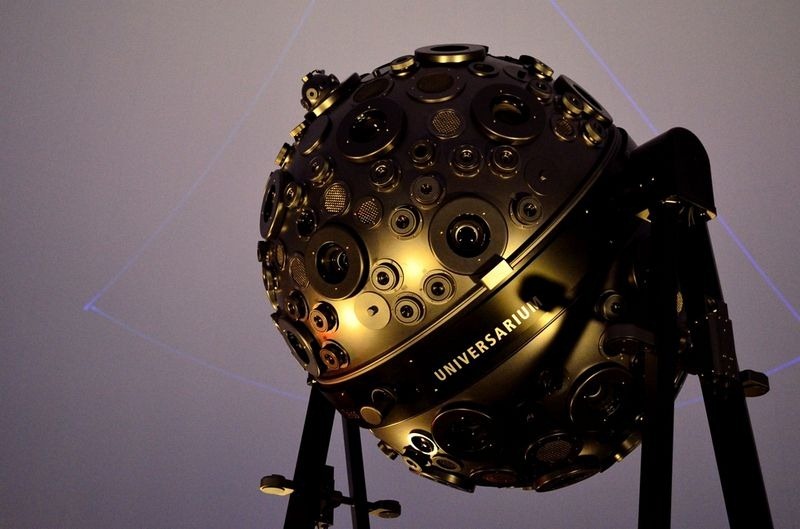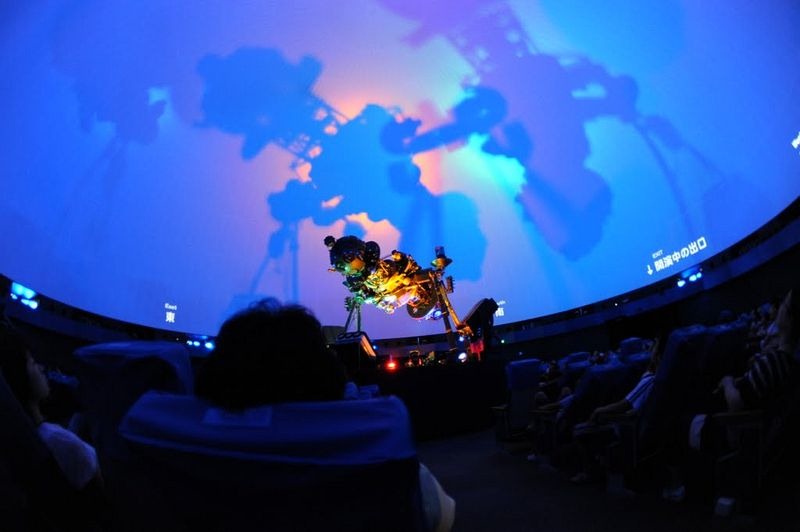The Nagoya City Science Museum, at the center of Nagoya City in central Japan, can be easily recognized by its enormous silver globe, called Brother Earth, that appears to hang in the air, wedged between two buildings. The globe, which looks incredible from the outside, is home to the largest planetarium in the world with a 35-meter projection screen. The planetarium is equipped with two state-of-the-art projectors — the Universarium Model IX (optical planetarium) and the Skymax DSII-R2 (digital planetarium) — that is capable of accurately displaying the positions and brightness of more than 9,000 fixed stars visible to the naked eye from any location on earth, as well as the every-day motion of the planets and the phases of the moon.
The planetarium was opened in 2011, when much of the museum was renovated. The old Science & Technology and Astronomy buildings were replaced by a new wing that housed the planetarium globe, and since then the planetarium has become the major attraction and symbol of the museum.
When the Nagoya City Science Museum was opened in 1962 in honor of the 70th anniversary of Nagoya city, the old Astronomy Building had a smaller planetarium. The old planetarium had a Model IV large-dome planetarium projection machine from Carl Zeiss, installed in the same year. Two years later, the Science & Technology Building was added and later the Life Science Building in 1982. The museum was one of the best comprehensive science-museums in Japan.
But 50 years later the old projector began showing signs of aging. So the city decided to reconstruct the astronomy and the science and technology section of the Nagoya City Science Museum. The museum remained closed for nearly seven months. When it was reopened in March 2011, it had the largest planetarium in the world, beating the previous record holder — the Ehime Prefectural Science Museum in Niihama City, also in Japan — by 5 meters.
The planetarium dome has an internal diameter of 35 meters and is made up about 700 high-spec punching panels that are seamlessly joined together to create a smooth projection surface. Inside the dome are 350 separate reclining seats, arranged in concentric circles around the star projector, which are able to rotate 30 degrees to the left and right.

The Carl Zeiss Universarium Model IX is the world's most advanced star projector. Photo credit
To project a realistic starry sky, the museum procured two different projectors — one opto-mechanical and one digital. The optical starball, Universarium Model IX from Carl Zeiss, is installed exactly in the center of the dome. This projector is equipped with fiber optics that makes it possible to show the beautiful stars with high brightness levels and small size.
The digital planetarium, the Skymax DSII-R2 made by Konica Minolta Planetarium Co. Ltd, can deliver high quality 64 mega pixel images that are fed to 6 video projectors. As well as displaying stars and planets, this system can project videos of space travel and other celestial scenes and all sky map.
Planetarium shows are 50 minutes long and are held 6 times a day and are said to be very informative and entertaining for the whole family. Unfortunately, the presentations are given only in Japanese.

Sources: Nagoya City Science Museum Website / Zeiss.com / Tenkai-Japan / Nagoya International Center





















Comments
Post a Comment